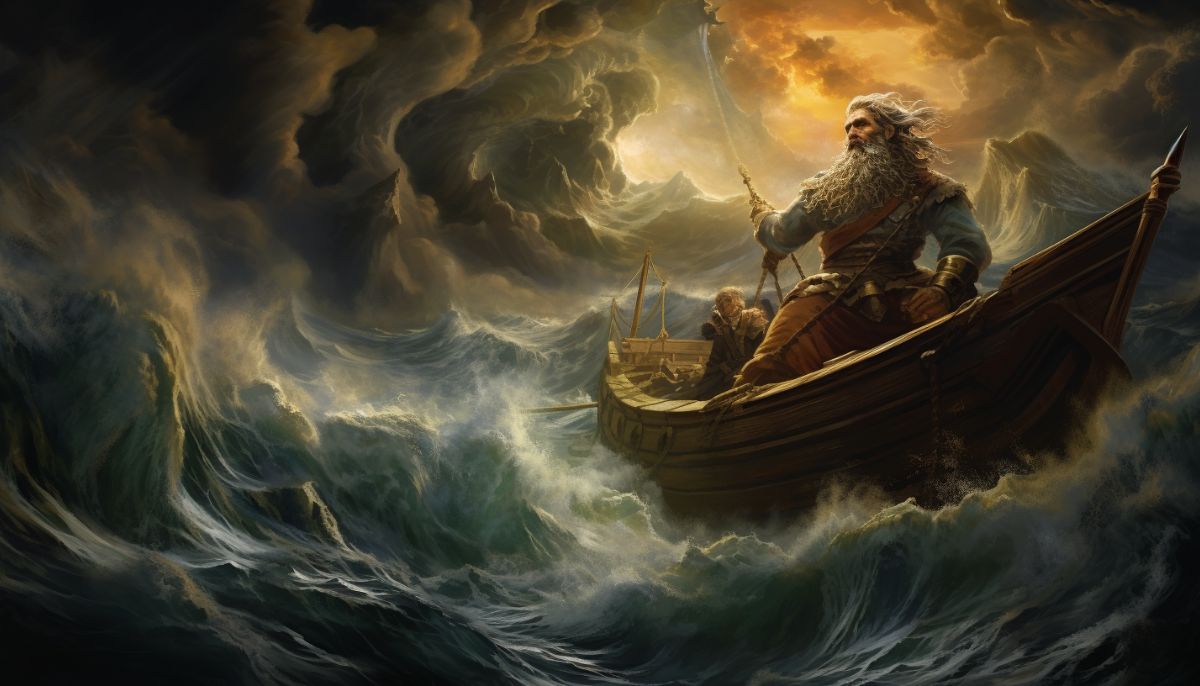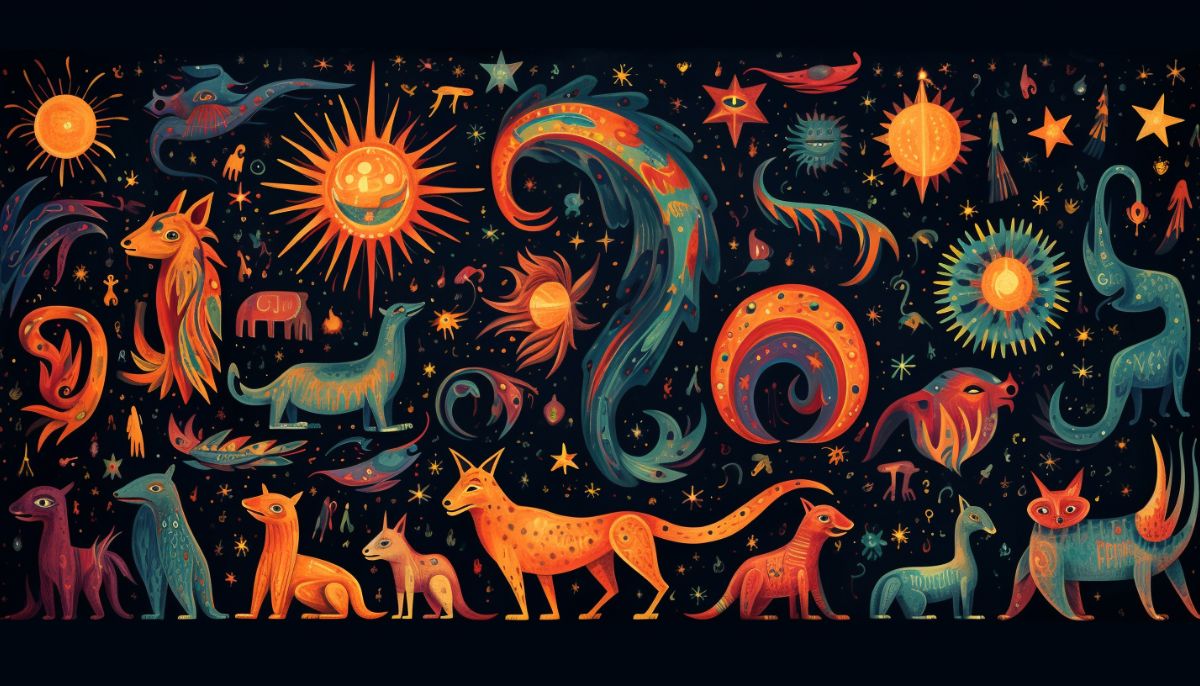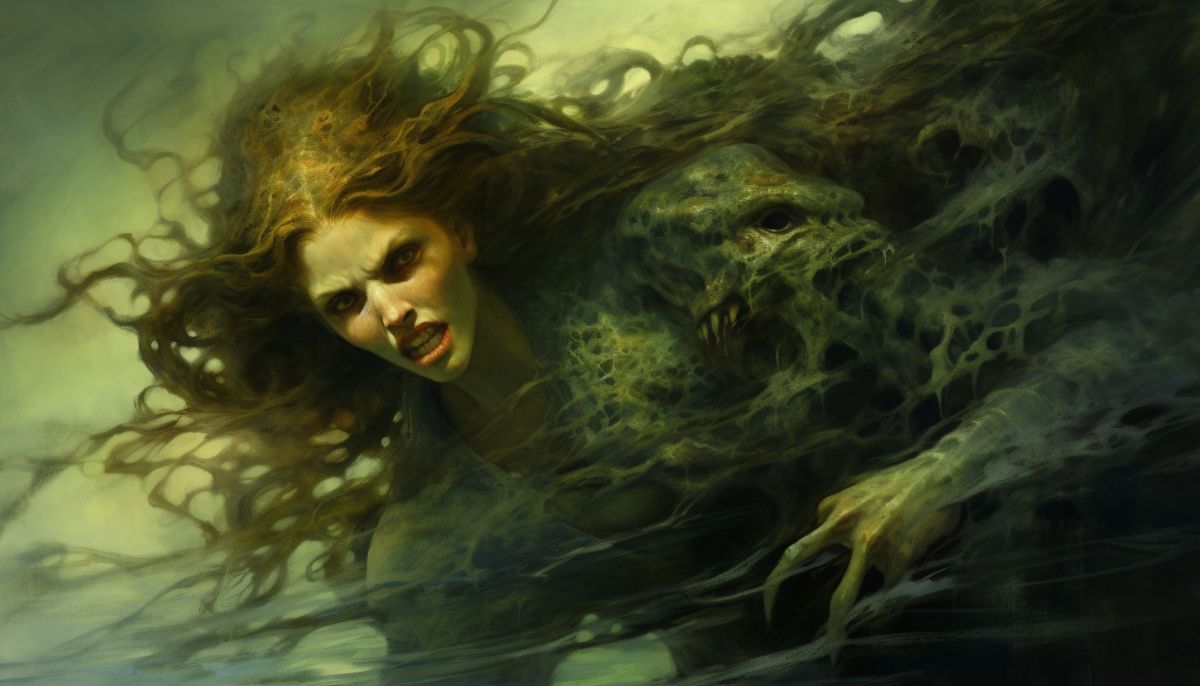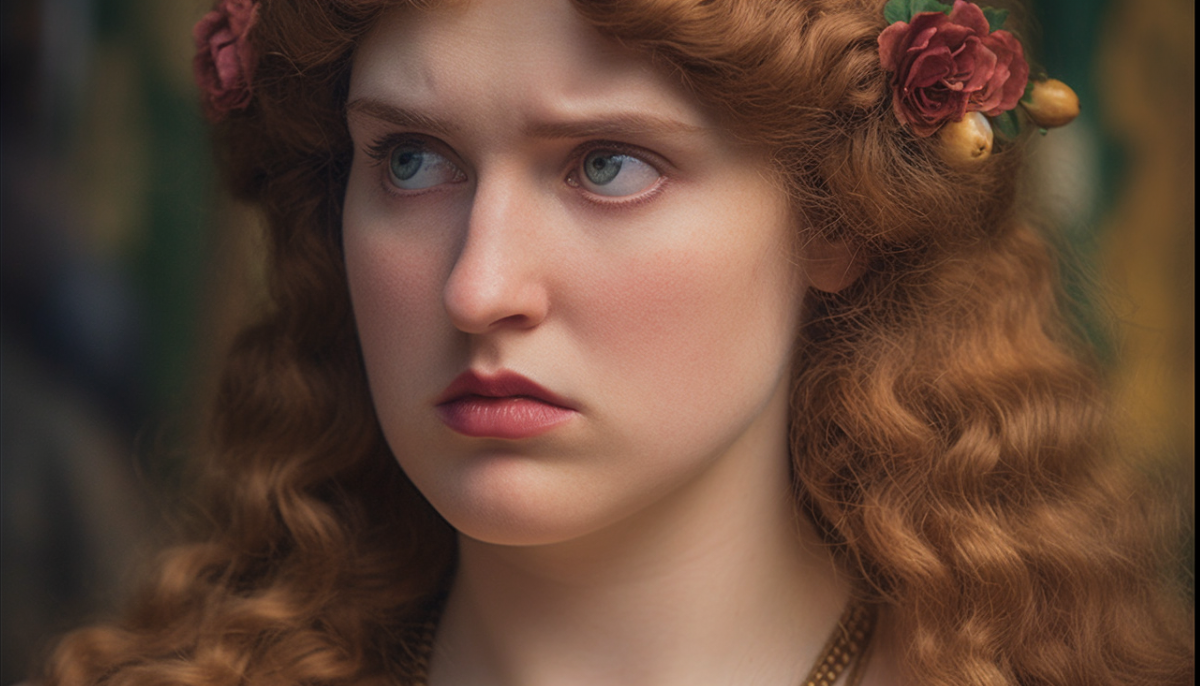In the annals of Greek mythology, the name “Scylla” conjures images of a monstrous force, an embodiment of maritime terror that struck fear into the hearts of ancient seafarers.
Her legend, entwined with the perils of the sea, has echoed through the ages, leaving an indelible mark on the lore of the deep. But how did Scylla come to be, and what tales surround her enigmatic existence?
In this exploration, we journey through Greek mythology to uncover the origins, interpretations, and enduring legacy of Scylla, the maritime specter whose story continues to captivate and intrigue.
What does Scylla look like?
Descriptions of Scylla vary, but according to Homer, she had twelve dangling feet, six long necks, and heads lined with three rows of sharp teeth. Her voice was compared to the yelping of dogs.
In classical art, Scylla was often depicted as a fish-tailed sea goddess with canine fore-parts surrounding her waist.
Different versions of Scylla’s appearance exist in various sources. Some portray her with six heads of different animals, while others suggest three heads.
According to late classical writers, Scylla was once a beautiful nymph loved by the sea god Glaucus. However, her jealous rival, the witch Circe, uses magic to transform her into a monstrous being.
Scylla in Greek Mythology
In Greek mythology, Scylla is a formidable sea monster known for haunting a narrow strait opposite the whirlpool of Charybdis. Ships that ventured too close to her rocks were said to lose six men to her ravenous, darting heads.
How did Scylla turn into a monster?
Scylla’s transformation into a monstrous being is rooted in a tragic tale from Greek mythology. According to the ancient accounts, Scylla was once a beautiful sea nymph who caught the eye of the sea god Glaucus.
However, Glaucus’s advances were rebuffed by Scylla, who found herself repulsed by his love. Frustrated and heartbroken, Glaucus sought the assistance of the sorceress Circe to win Scylla’s affection.
Circe grew envious of Scylla’s beauty because of her unrequited love for Glaucus. In a fit of jealousy and spite, Circe concocted a potion to charm Glaucus.
However, her spell went awry. Instead of endearing Glaucus to herself, the potion transformed Scylla into a grotesque, multi-headed sea monster, forever destined to haunt the waters.
Homer’s Scylla

In Homer’s epic poem, the “Odyssey,” Scylla is portrayed as a fearsome creature that dwells in a narrow strait opposite the whirlpool Charybdis.
This perilous passage is a treacherous obstacle for sailors navigating the seas. Scylla is described as having twelve legs and six heads, each equipped with razor-sharp teeth. When ships pass by, she lunges from her lair, snatching sailors from the decks and consuming them.
Homer’s depiction of Scylla illustrates the dangers of the sea and the challenges faced by Odysseus during his epic journey. Overcoming Scylla’s threat becomes a testament to Odysseus’s cunning and determination.
Ovid’s Scylla
In Ovid’s narrative, found in his epic poem “Metamorphoses,” the focus shifts to Scylla’s internal turmoil and her emotional struggle following her transformation. Ovid paints a poignant picture of Scylla’s despair, as she laments the loss of her former beauty and the curse that now defines her existence.
Ovid’s portrayal of Scylla provides a deeper psychological insight into the character, exploring themes of identity, self-acceptance, and the destructive power of jealousy. Through Ovid’s lens, Scylla’s tragic fate is a cautionary tale about the consequences of unchecked emotions and the destructive potential of unrequited love.
In both Homeric and Ovidian accounts, Scylla emerges as a formidable and haunting figure, embodying the perils of the sea and the capriciousness of fate. Her transformation from a graceful nymph to a monstrous entity is a stark reminder of Greek mythology’s fragile boundary between beauty and horror.
Virgil’s Scylla
Virgil’s Scylla is prominently featured in Book Three of his epic poem, the “Aeneid”. In Virgil’s rendition, the strait inhabited by Scylla is linked to the real-world Strait of Messina, which lies between Calabria in Southern Italy and Sicily. This geographical association lends a tangible dimension to the mythical tale, grounding it in the landscape of ancient Italy.
The coastal town of Scilla in Calabria draws its name from this legendary figure, emphasizing the enduring cultural impact of Scylla’s story on the region. It is believed to be the supposed abode of the nymph-turned-monster, adding an element of local folklore to the narrative.
Sea Monsters in Greek Mythology

Sea monsters held a significant place in Greek mythology, reflecting the profound influence of the sea on ancient Greek culture.
At the time, sea travel was a means of transportation and essential for trade, exploration, and expansion. Consequently, the vastness and unpredictability of the sea gave rise to a rich tapestry of myths centered around maritime perils.
These sea monsters served as cautionary tales and metaphors for the inherent dangers of the deep. Another notorious sea monster was the Trojan Cetus, a massive sea creature sent by Poseidon as punishment or divine challenge.
The sea monster trope also extended to the realm of divine beings. The primordial sea god, Poseidon, was often depicted wielding a trident and commanding the depths, his wrath capable of conjuring destructive storms and unleashing monstrous creatures upon sailors.
Greek mythology abounds with tales of sea monsters, reflecting the profound impact of maritime life on ancient Greek society. These myths served as cautionary tales, emphasizing the perils of sea travel and the unpredictable nature of the deep.
Through these myths, the Greeks navigated not only the physical challenges of the sea but also the moral and existential dilemmas inherent in the human experience. The monsters of the deep continue to capture our imaginations, reminding us of the enduring power of ancient storytelling.
Want to know more about the creatures and monsters of Greek Mythology?

Explore more articles like this in our broader series on Greek monsters. To delve even deeper into the world of mythical creatures, be sure to check out our comprehensive hub article on the monsters of Greek mythology.






